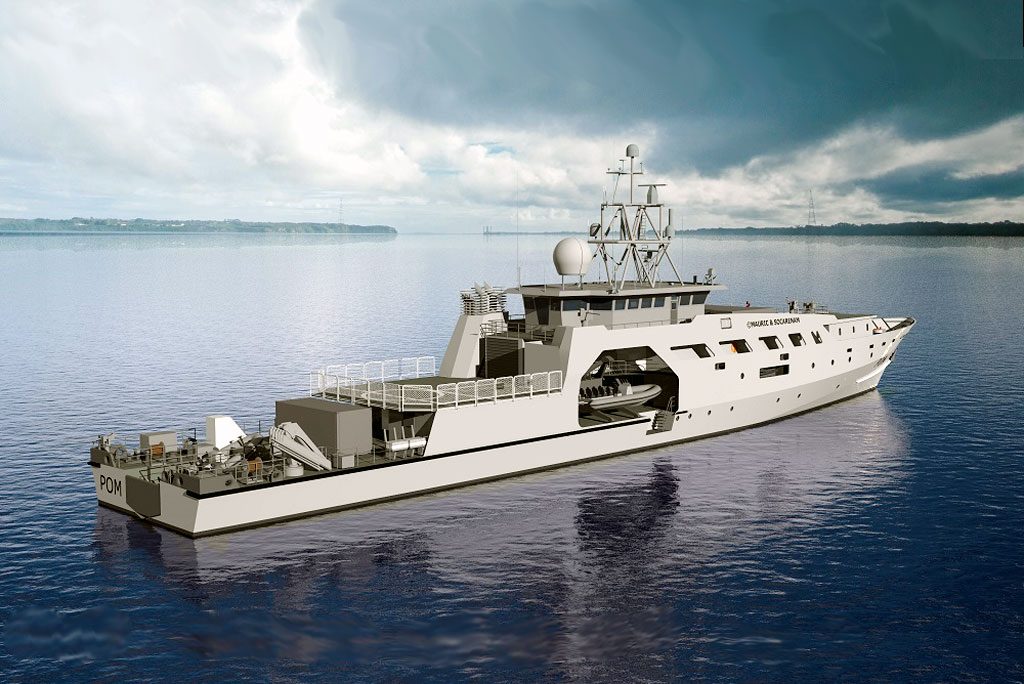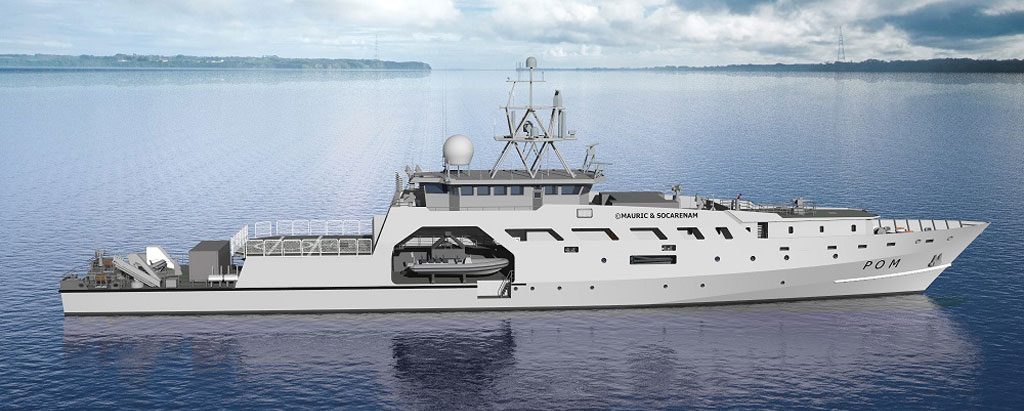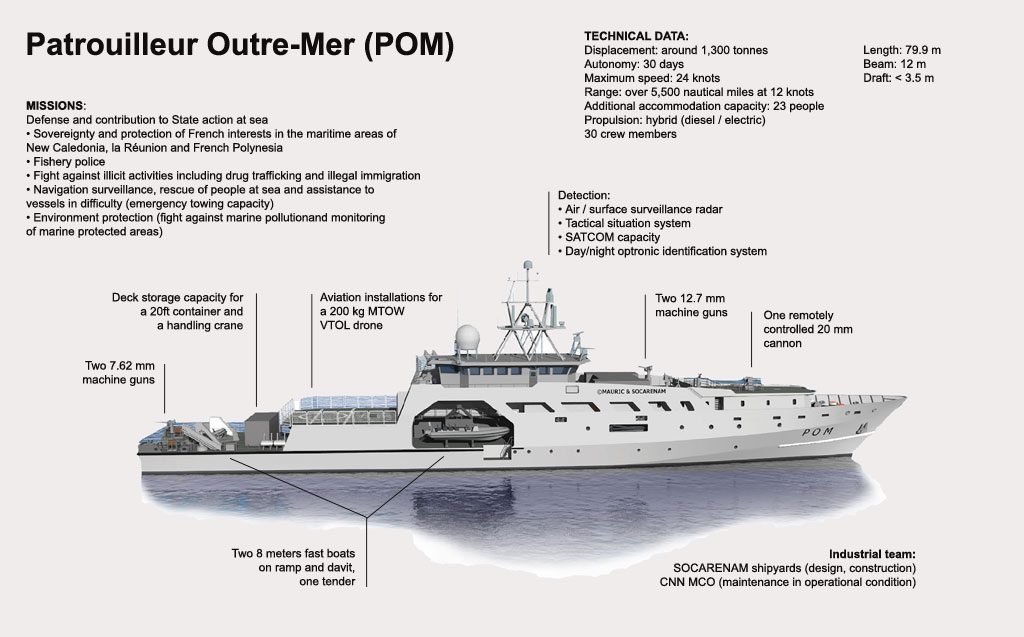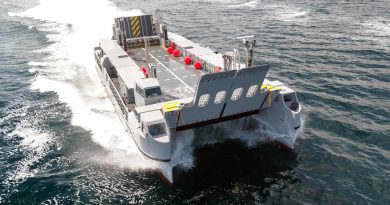
First steel cut for the French Navy Patrouilleur d’Outre Mer (POM)
The programme for the design, construction, delivery and initial in-service support of the new six Patrouilleur d’Outre Mer (POM or Overseas Patrol Vessel) vessels built by the Socarenam & Mauric/CNN MCO industrial team for the Marine Nationale reached a new important milestone.
The steel cut ceremony for the first of the six POM-class platforms, attended by the French Minister of the Armed Forces Florence Parly at the Socarenam’s Saint Malo shipyard, took place last 8 October.
Announced by the President of the French Republic, Emmanuel Macron, during the Les Assises de l’économie de la mer maritime economy symposium on 3 December 2019 and awarded to an industrial team including Socarenam/Mauric and CNN MCO (part of the Engie group), respectively responsible for the design, construction and in-service support for their first six years of operational service, the POM programme is to replace the older generation of P-400 smaller offshore patrol and other vessels stationed in French overseas territories for the surveillance of their respective maritime areas with a more capable platform. The POM was designed since the beginning to embark unmanned air vehicles.

Destined to conduct a wide range of missions, from the protection of national interests and maritime zones in New Caledonia, French Polynesia and Reunion Island waters, to the fishing control, from the fighting of illegal human being and drug traffic to search and rescue and emergency towing, in addition to environmental preservation, the new POMs will be delivered between 2022 and 2025, with the first to arrive in New Caledonia by late 2022. Each of the overseas territories will receive two POMs which are to be stationed respectively at Nouméa (New Caledonia), Port des Galets (La Réunion) and Papeete (French Polynesia).
Designed by the Mauric naval architect bureau (ECA Group), with a displacement of around 1,300 tonnes, a length and beam of respectively 79.9 and 12 meters, and a draft of less than 3.5 meters, the POM features both lateral and stern areas for accommodating two 8 meters RHIBs (in addition to one tender) and one standard container in addition to the maintenance crane, a flight platform and aviation facilities for unmanned air systems up to 200 kg. With an hybrid diesel/electric propulsion system offering a maximum speed of 24 knots and an autonomy of 5,500 nm at 12 knots, together with an endurance of 30 days, the POM has a 30-unit crew and is capable to accommodate an additional 23 personnel including police and commando forces. Specifically designed to operate in the difficult environments of the Indian and Pacific Oceans, in addition to the accommodation and operation with unmanned air vehicles to extend the surveillance and rescue capabilities, the POM is also equipped with hydrographic, fire-fighting and towing capabilities. This new OPV has anti-pollution equipment, a water cannon and a local hydrographic survey suite.

The new vessels are equipped with a navigation, surveillance and combat suite centered on the Lyncea combat management system provided by the Hensoldt group’s Nexeya France company managing the air/surface and navigation radars, EO/IR suite, SATCOM communications and unmanned air vehicles. The Lyncea CMS offers a tactical datalink that increases operational capacities to communicate with the ship’s RHIBs and commandos. The CMS also offers additional capacities to store and analyze data collected by the ship’s unmanned aerial vehicle. The POM will be equipped with a Nexter Narwhal 20B remotely controlled 20 mm gun, two 12.7 mm and two 7.62 mm machine guns. Although no indications have been provided about the to-be embarked unmanned air vehicle except for the capability to operate up to 200 kg air vehicles, the French MoD is expected to procure in 2020 a number of SMDM (Système de mini-drones Marine) systems based on Airbus subsidiary’s Survey Copter, each expected to include two DVF 2000 Aliaca UAVs.
Images courtesy French MoD/DGA



